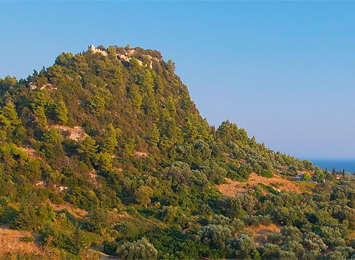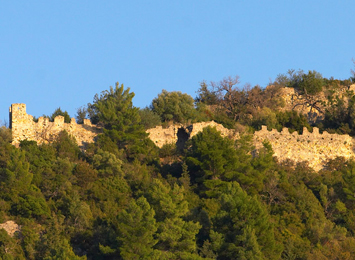Riniasa Castle
Close to the village of Riza in the Prefecture of Preveza, on a hillock which constitutes a natural fort, stands the famous castle which protected the medieval citadel of Riniasa and controlled trade both at sea and on the mainland.
Description
During the Middle Ages it developed into a castle city. The castle was probably built by the Despot (ruler) of Epirus Thomas I Komnenos Doukas in the late thirteenth century to protect Epirus, hence the name Thomocastro (Thomas’ Castle). In 1338, in the revolt against the Byzantine suzerainty, the castle was governed by Nikephoros II, the son of John Orsini, the last Despot of Epirus.
After his occupation of the castles of Arta and Rogoi, Ioannis Kantakouzenos convinced Nikephoros to surrender the castle. It was then maintained by the Byzantines until 1350 when it was occupied by Serbs and later by Albanians who renamed it Riniasa. Later on Carlo Tocco made improvements to the fortification by adding cannons (lumbarda). This was followed by battles against Turkish raiders who occupied it in 1451. In the eighteenth century, the Souliotes fought against Ali Pasha. In 1803, Despo, the widow of a Souliot called Botzis, with her daughters, her sons’ widows, and grand-children, defended themselves against the Turkish Albanian in the so-called tower of Dimoula (at Riza) and set fire to the gunpowder to avoid being taken hostage by the enemies. Subsequently, the Souliotes occupied the castle and fought for the liberation of Parga. In the end, after the Greek troops failed in the battles at Peta and Plaka, Riniasa was finally abandoned. Below the castle the large bridge on the national road is today called “the Bridge of Despo”.




